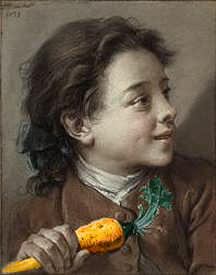5.13.2008
When I was in graduate school, I did my final research paper on Social Action in Art Education. The conclusion that I had come to (as far as I can remember) was (a) its harder than it sounds, and (b) you have to create an environment that is open to integrating social action when there is a need.
The problem that I keep encountering, even with many well intentioned themed projects that I've witnessed and participated in, is what Jonathan Kozol calls "learned helplessness". In other words - you do a project with the kids. They tackle something like "global warming" in an art project. Your students create posters to go around the school to encourage other students to use less paper cups or ride their bikes to school instead of driving Mom and Dad's Hummer. When the project is finished, the hope is at best that some small changes are made in your local community. On a grander scale, your student's brilliant anti-global warming poster does nothing to stem the tide of greenhouse gas emissions even though it was clever enough to get listed on Boing Boing.
The end result is that the students learn that for the really big issues, they have no power to change anything at all.
And maybe that's true. Chalk it up to a move from my earlier idealistic 20s into my rational 30s, but I've largely settled for the "Think Global, Act Local" mantra that serves a pretty good reminder to set reasonable objectives. Perhaps a lesson plan that begins with Objective: Students will learn that good composition and design can end world hunger might be a bit of a reach.
However, today's rant post is a draft for some thoughts about the confluence of education, social action, and what we call "learning 2.0". This comes on the heels of yesterday's post about the disaster in China and wondering what can be done to help. Two things popped up in my RSS feeds today that prompted this post. The first was this page on Gandhi’s Top 10 Fundamentals for Changing the World. A familiar quote on that page reminded me that its not the immediate result of a lesson that matter as much as the lasting learning. The persistence of working towards larger goals with the knowledge that nothing worth doing is easy is a key lesson that can't be taught in one unit.First they ignore you, then they laugh at you, then they fight you, then you win.
The second thing I found was this video, thanks to my buddy Mike Romard, a colleague and fellow blogger on U Tech Tips. Learning to Change, Changing to Learn paints an important picture of the impact of what it describes so beautifully as the "death of education and the dawn of learning":
It's a bit sound-bite-y, but each new voice adds an important thought that can and should be examined more thoroughly.
.So the coin of the realm is not going to be memorizing the facts that they're going to need to know for the rest of their lives, the coin of the realm will be do you know how to find information, do you know how to validate it, do you know how to synthesize it, do you know how to leverage it, to you know how to communicate with it, do you know how to collaborate with it, do you know how to problem solve with it. That's the new 21st century set of literacies...
If we are sufficiently engaging students in these 21st century literacies, then how will these connections empower students to reach out with their message beyond the classroom and engage other students? The big questions to me is, what becomes of "Think globally, act Locally" when students audience is global instead of local?















Is the student audience really global? Perhaps it's about re-defining local or community within the asynchronous interactive environment. For instance: Jean-Luc Nancy's approach intrigues me. I don't mean to imply that I disagree with many of your points, but I understand community differently than how it is traditionally defined. I think that students see their online friends in much the same way that earlier generations might have thought of their friends from across town. Distance and time are immaterial in the 21st century learner's mind. Once we, as educators, can unlock that potential and work within this technomediated way of knowing, I think that we will begin to see new interactions and corresponding social actions on a global and local scale.
As always, I appreciate your thoughts! Actually, I think we're pretty much in agreement - to your question - Is the audience really global? - i think what i meant to imply is that it can be. When I think about the projects that we've started working on through Art Ed 2.0, I see a lot of potential. Our first big project, the Artist Trading Cards, attracted 18 schools from around the world and hundreds of students, and we're already getting requests for new involvement in the rotoball project from new countries for 2009.
Developing this kind of connectivity will be instrumental in - like you say, unlocking the potential of creating social action on a global scale.